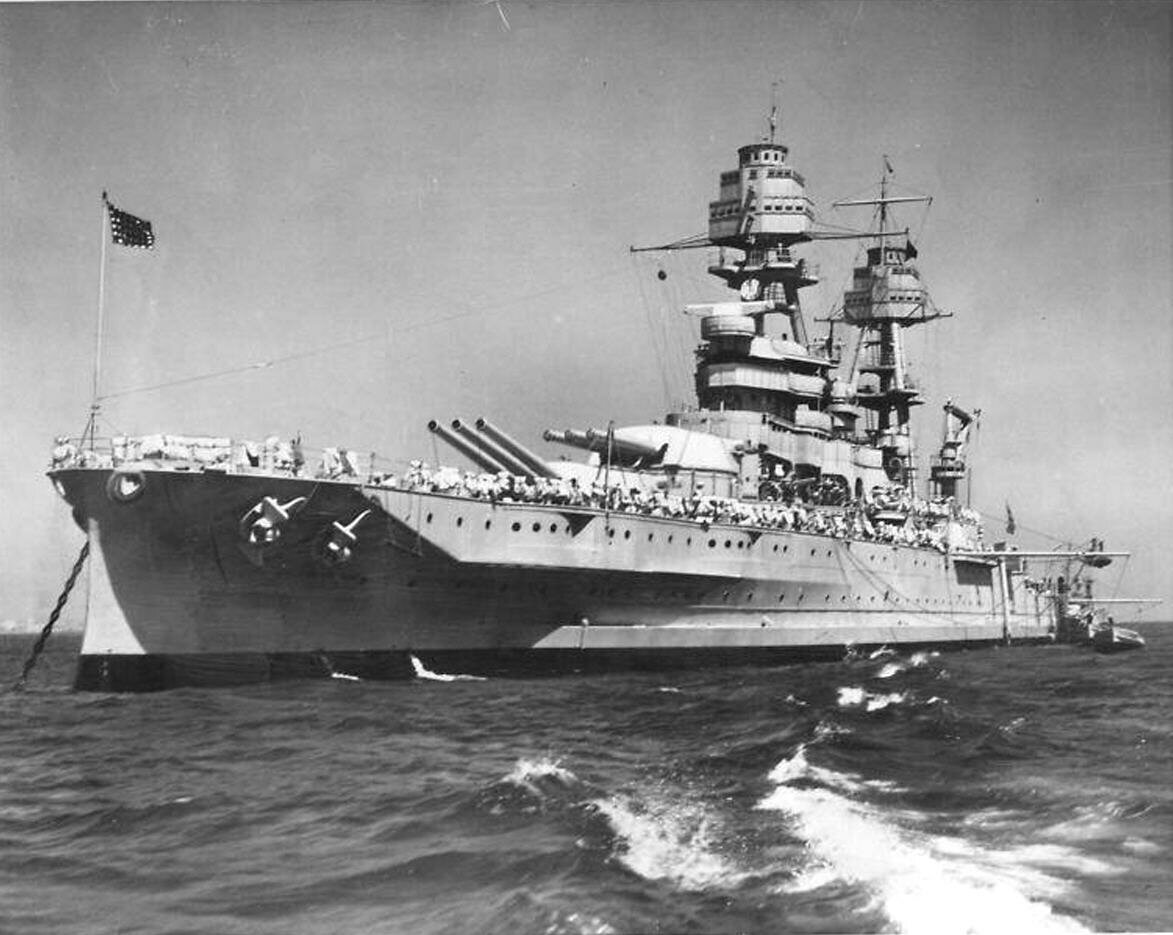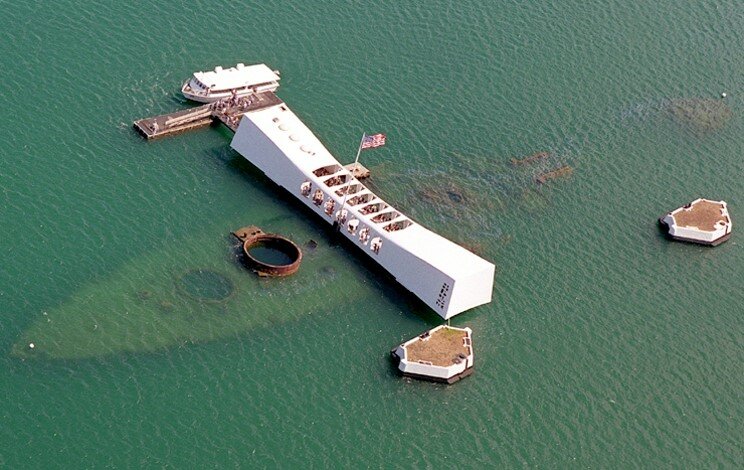Brothers among casualties aboard Arizona
woodctystringer@gmail.com
truck the USS Arizona was nearly eight feet long and weighed 1,760 pounds. It was a modified armor-piercing naval shell rigged with a delayed fuse. The bomb was designed to be dropped from about …
This item is available in full to subscribers.
Attention subscribers
To continue reading, you will need to either log in to your subscriber account, below, or purchase a new subscription.
Please log in to continue |
Brothers among casualties aboard Arizona
truck the USS Arizona was nearly eight feet long and weighed 1,760 pounds. It was a modified armor-piercing naval shell rigged with a delayed fuse. The bomb was designed to be dropped from about 10,000 feet and, upon impact, penetrate at least five inches of steel before detonating.
After penetrating the forward deck of the Arizona, it is believed the bomb detonated in a black-powder magazine. The resulting fire reached the much larger smokeless-powder magazine within seconds. That explosion literally destroyed the ship.
Eyewitness accounts describe how the front half of the 31,400-ton battleship was picked up out of the water, elevated by a wall of flame, and collapsed back. The whole ship shook.
The forward half of the ship became an inferno and was turned to molten steel. Hundreds of sailors who were at their battle stations in the forward half were vaporized or consumed by fire. Of the 2,403 American servicemen killed on Dec. 7, 1941; 1,177 were Arizona crew members.
Pieces of ship and men (torn apart in the explosion) rained down onto nearby ships and into Pearl Harbor. It was a scene from Hades.
Even today, listening to the sound of the detonation which destroyed the Arizona, one is taken aback at the immensity of the shock.
That morning, 82 years ago, more than perhaps any single event in the history of the nation, came to shape the world. It forced the United States into a position of power and leadership in the world. The memory and influences of the Second World War and its aftermath influence policies yet today.
It also jarred the United States out of economic malaise and quieted the very strong minority who argued for isolationism. And it came at an extraordinarily-high price – the cataclysmic event which was the Second World War.
As if a precursor to the sacrifices which were to be made over the following four years, the attack on Pearl Harbor exacted its own terrible toll. A little known aspect of the attack was that there were 38 sets of brothers assigned to the Arizona.
That represents 76 brothers, of whom 63 (80%) died from the attack on Dec. 7. Only one set of brothers, the Warriner brothers of Wisconsin, lived through the events of that day.
The stories of those brothers, who they were, how they came to be shipmates in Arizona, and their fates are documented in the book “Brothers Down,” written by imminent historian Walter R. Borneman.
It was a recently-deceased contributor to this page, and a friend, Robert Spearman, who is responsible for highlighting their sacrifices in the Monitor. Spearman became a friend after he was interviewed about his own wartime service. Visits to his trailer near Saltillo and exchanges of books followed.
Spearman passed in July at age 94. The last book which he shared was “Brothers Down.”
The book prompted further research into the number of Texans who were shipmates in Arizona. As can be expected, Texas was well-represented in the ship.
Eighty-six Texans were killed aboard the Arizona on that December morning. From Eagle Pass to Tyler and from Ladonia to Borger to Leggett, the human loss of that morning was felt throughout the state.
The families from whom those men were produced were mostly rural. Large families were common and dire circumstances frequent.
Most entered the service for a chance to earn steady pay and to receive regular meals. Sending $5 or possibly even $10 home each paycheck was quite a meaningful gesture for many of them.
In the area roughly drawn from the athletic competition of three local high schools, there were notable sacrifices. Pittsburg lost three sons that day (Royal Elwell, Robert Hudnall, Weldon Milligan) and Wills Point three (Dee Ayers, Harvey Havens and Horace Wood). One casualty each came from Athens (Robert Tiner), Grand Saline (Allen Fincher), Ladonia (Grover Bishop), Lone Oak (Fred Moore), Sulphur Springs (Harold Patterson) and Tyler (Carl Webb).
“Brothers Down” captures the heart-wrenching lives and deaths of the brothers in Arizona. The poignant explanations of what transpired among the families of the lost simply cannot be properly summarized here.
The vast majority of the Arizona crew killed on Dec.7 remain entombed in the ship, just below the waters of Pearl Harbor. It is a gravesite, and is maintained as one of the most powerfully soul-stirring sites in the United States.
Not all Arizona casualties, however, were unrecovered in the ship. Eighty-five unidentified sets of remains of Arizona crew members were buried in co-mingled graves at the Punchbowl National Cemetery of the Pacific, just east of Honolulu. They are marked as “Unknown, USS Arizona.”
A private civilian volunteer organization “U.S.S. Arizona Operation 85” is presently working to identify those unidentified remains interred at the Punchbowl. The organization is building a data base of reference DNA from the families of the Arizona fallen.
Once 60% of the families have submitted DNA samples, the Defense POW/MIA Accounting Agency will elevate the priority of the Arizona casualties and begin to match the remains contained within those 85 graves. The organization is presently at 52% of the initial goal.
The tomb that is the remains of Battleship Arizona lays undisturbed, except for the dropping of leis in memorial from the monument which straddles the hull. Over the years some 40 crew members have had their cremains interred with their shipmates.
One crew member of the ship is yet living, centurion Lou Conter. Yet active in supporting memorial events of Pearl Harbor, it is hoped that the memory and meaning of that fateful day will not pass when he is laid to rest.









